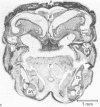Abstract
The fracture repair of reptilian dermal bones has not previously been reported. Moreover, repair of fractured dermal bones in birds and mammals involves secondary chondrogenesis whereas that of amphibians does not. Therefore an investigation into the repair of fractured reptilian dermal bones could reveal the stage during vertebrate evolution at which the process of secondary chondrogenesis appeared. Experimental incisions were made in the parietal bones of seventeen lizards (3 species) and 2 snakes (1 species). These resulted in a fracture environment of limited vascularity and increased movement--two known stimuli of secondary chondrogenesis in birds and mammals. Re-epithelialisation was rapid and dead bony fragments quickly sequestered. The blood blot was quickly organised into connective tissue, the dural periostea proliferated, osteoblasts differentiated and bony union was effected after 18 days. The width of the fracture gap was the principal variable affecting the chronology of fracture repair. Secondary cartilage was not detected in any specimen, of any species, at any stage of the fracture repair. It therefore appears that the progenitor cells on reptilian dermal bones are not capable of forming secondary cartilage and that this tissue arose comparatively late in vertebrate evolution.
Full text
PDF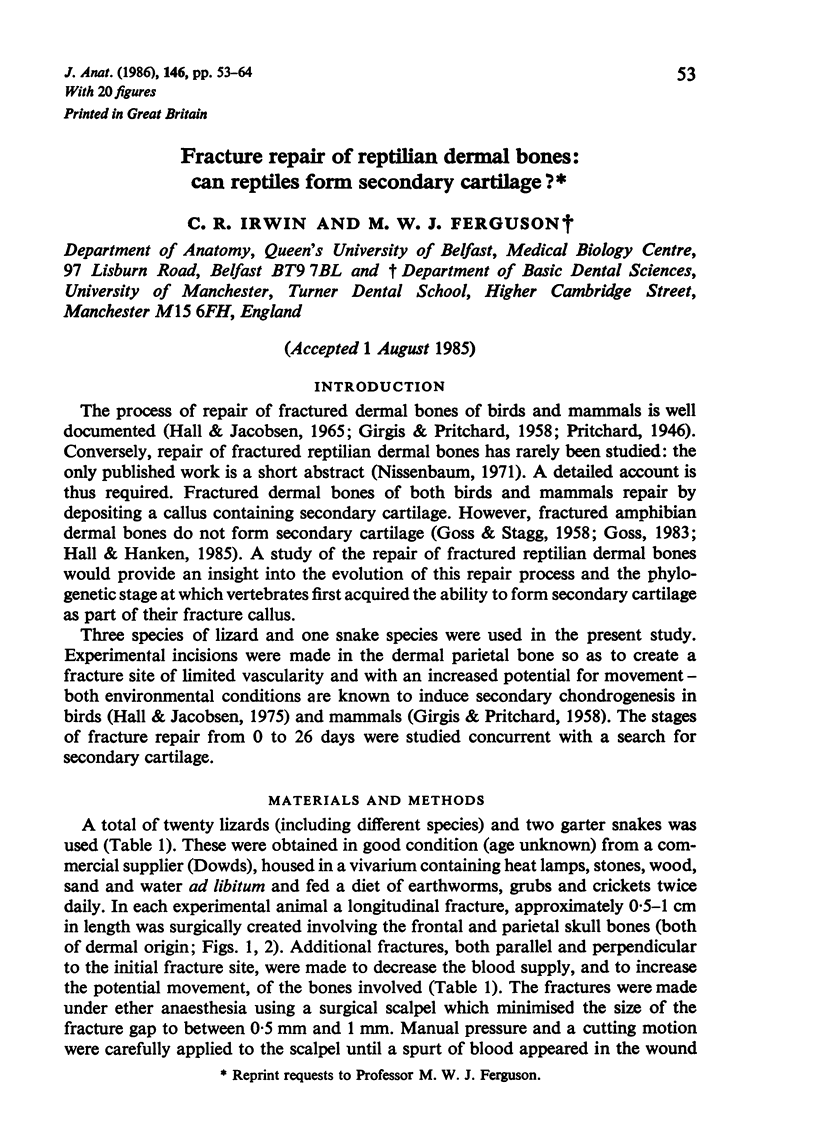

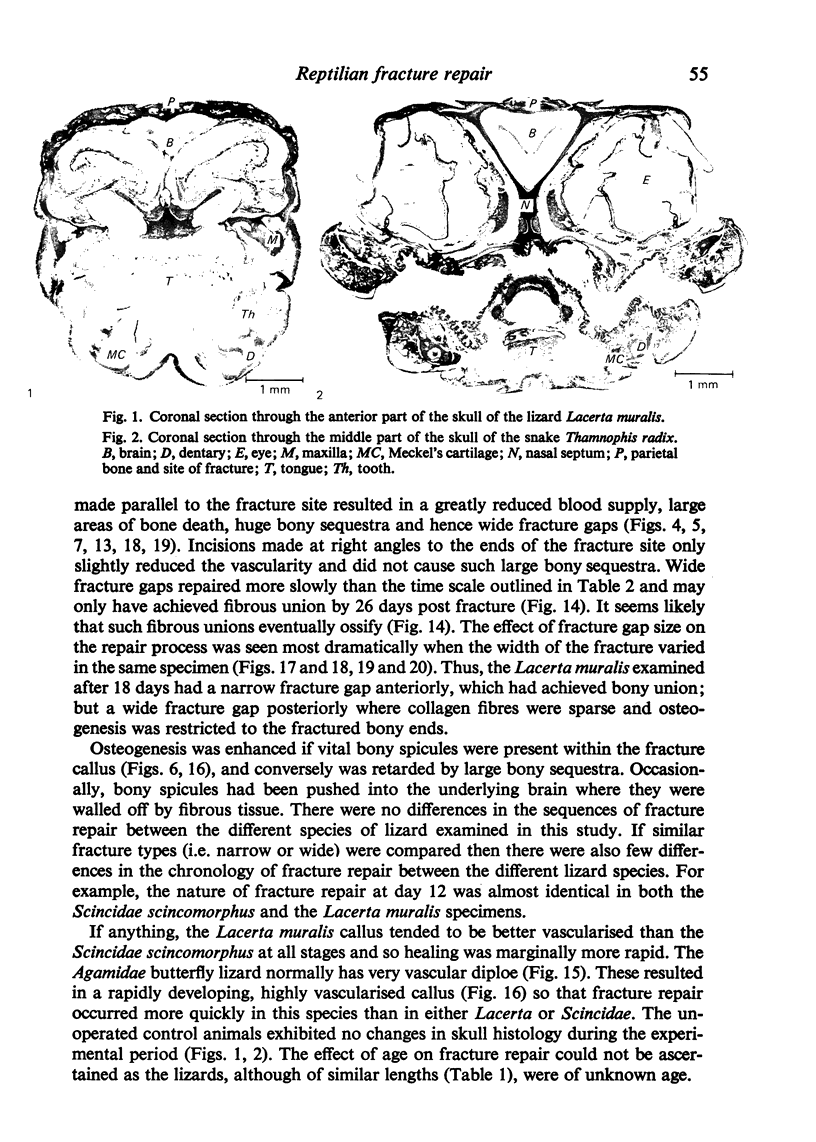
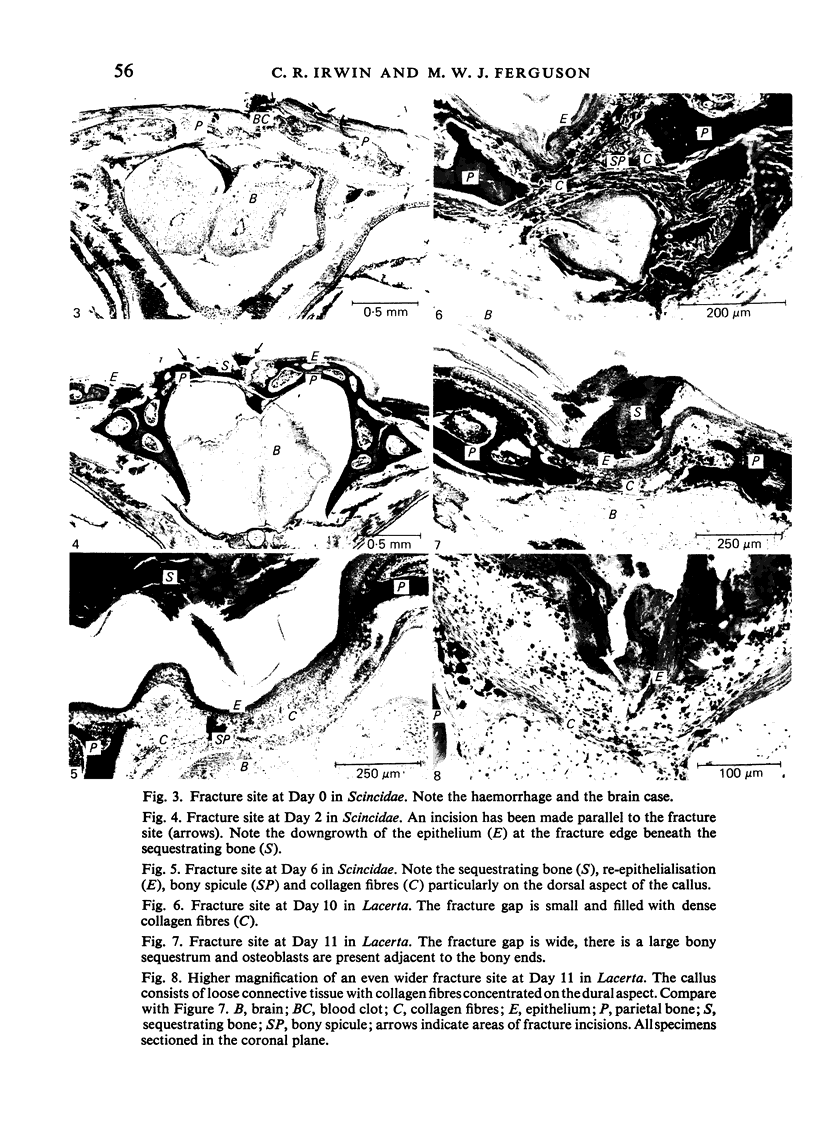

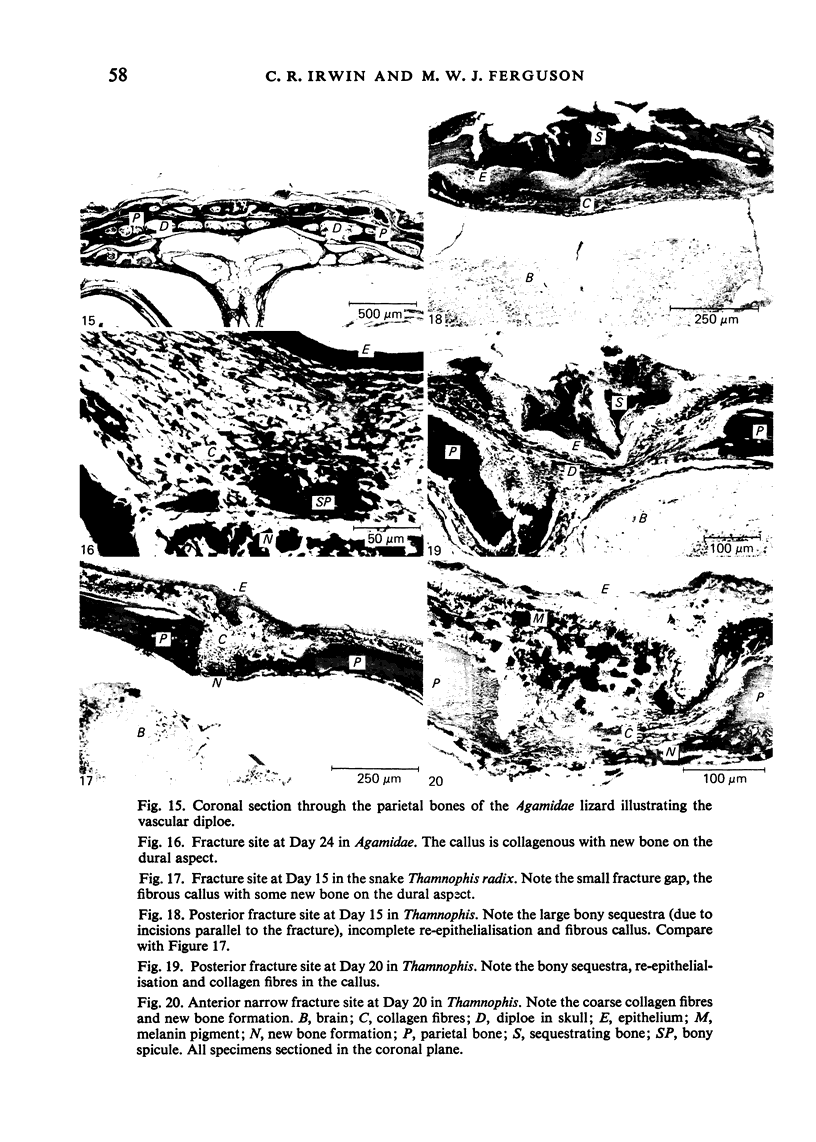
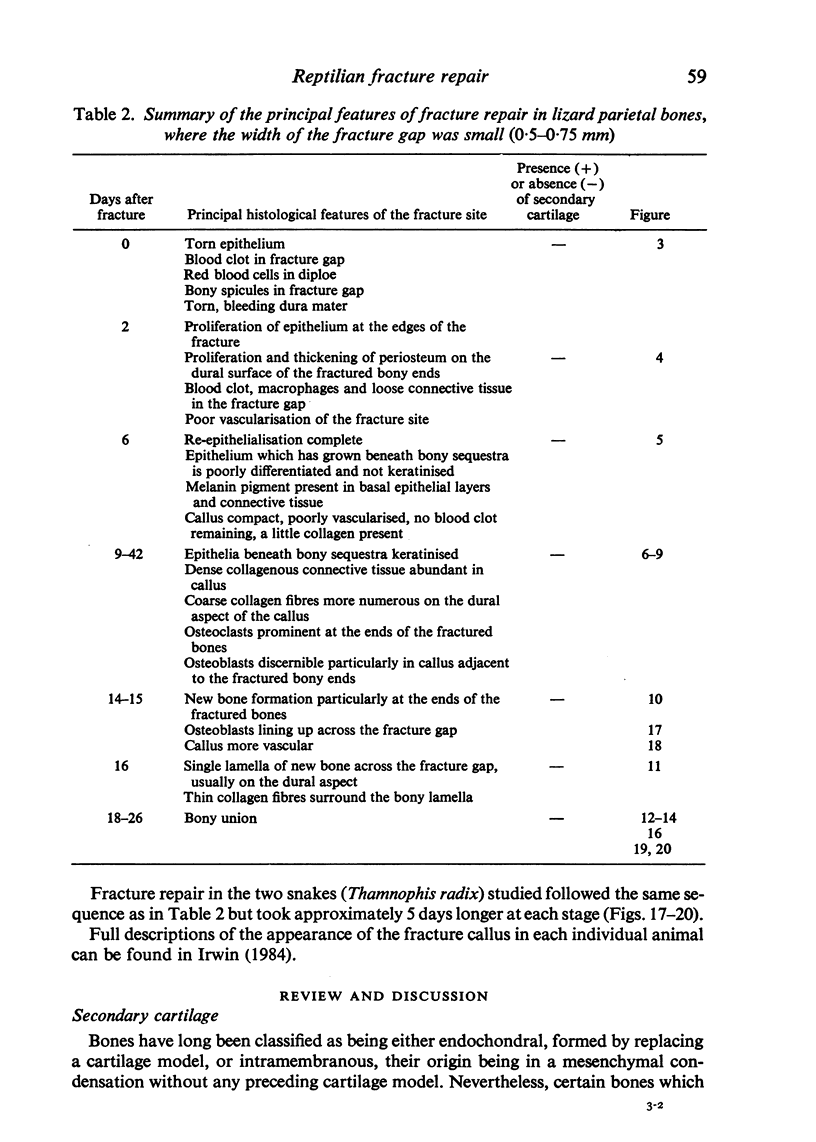
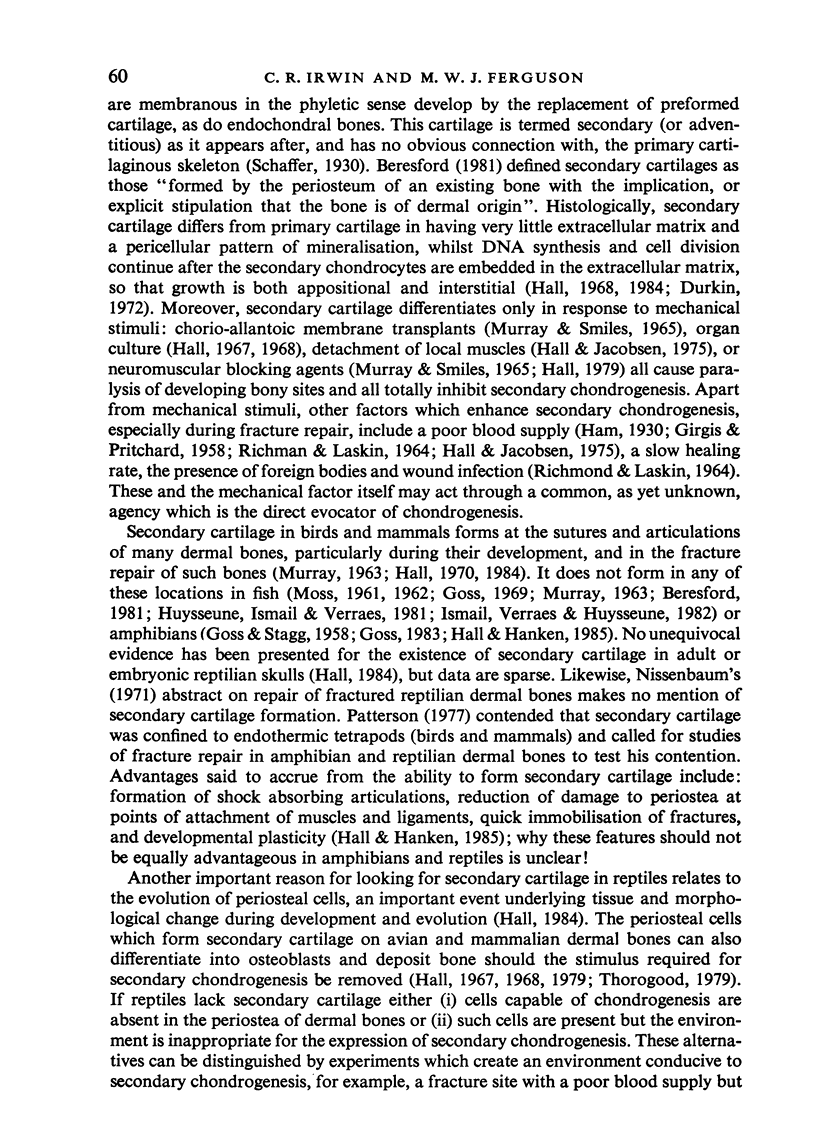

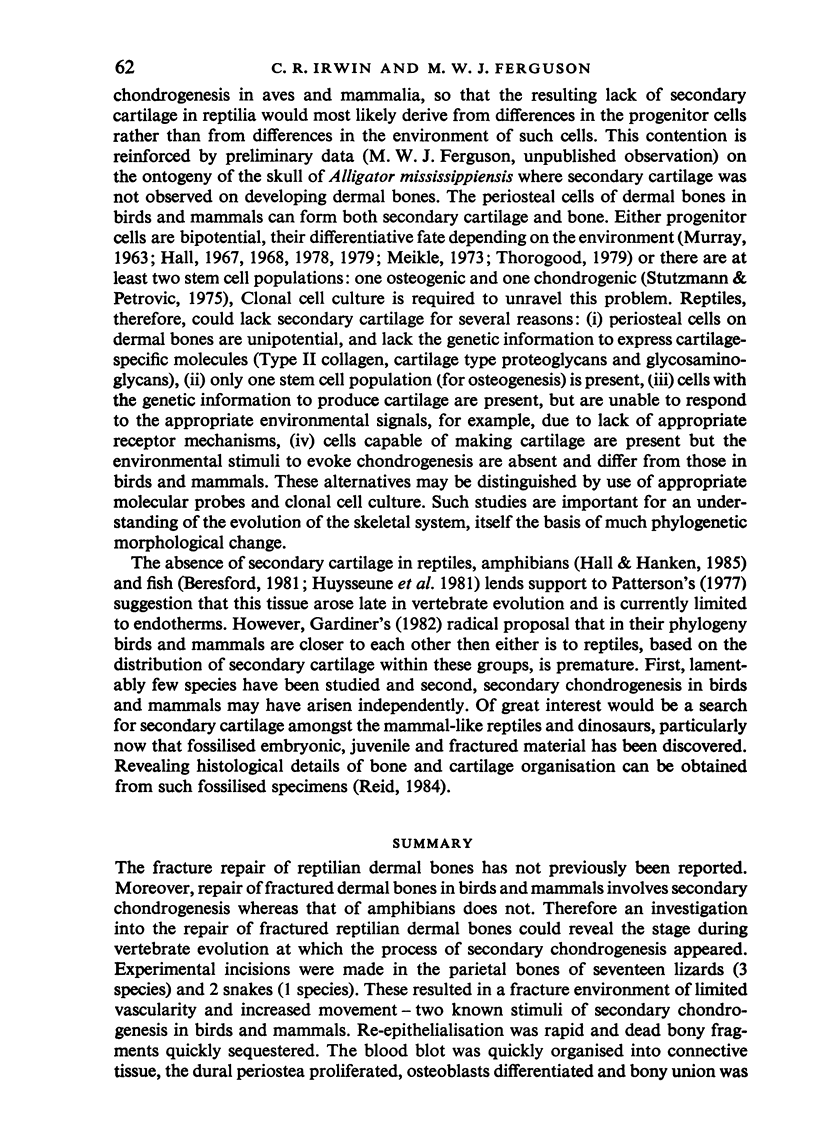
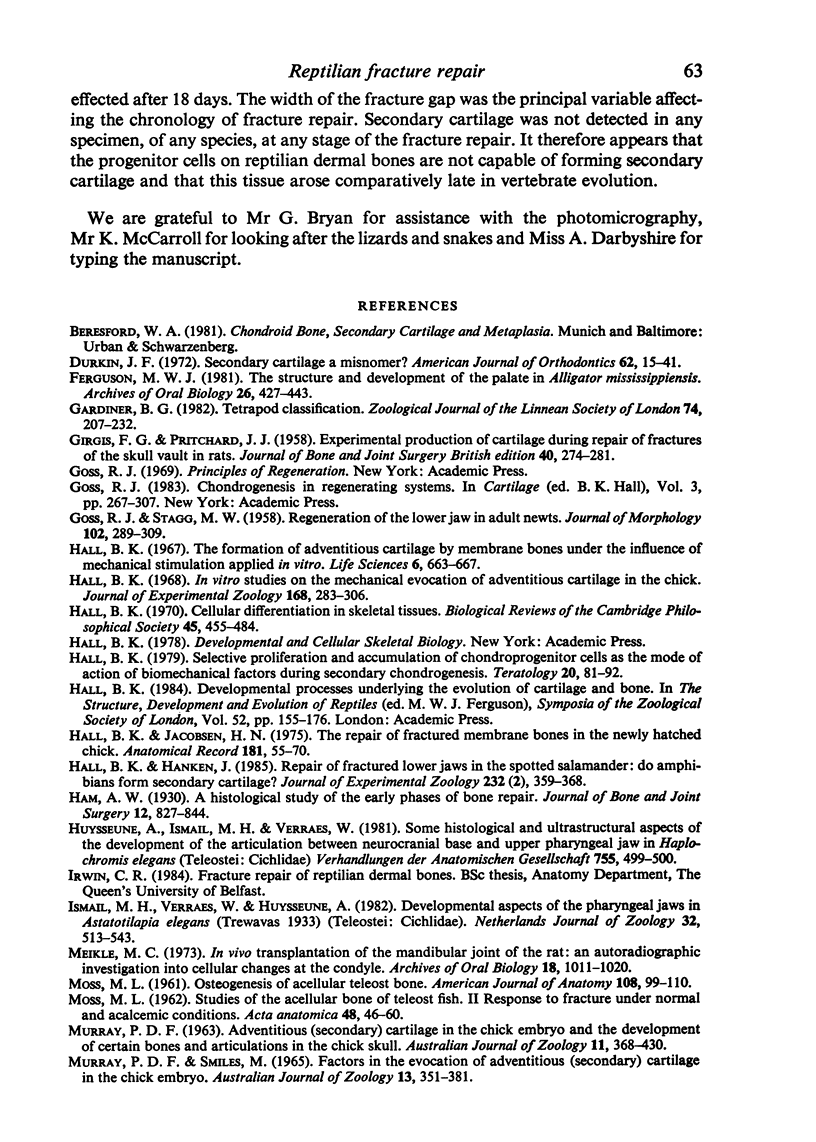

Images in this article
Selected References
These references are in PubMed. This may not be the complete list of references from this article.
- Durkin J. F. Secondary cartilage: a misnomer? Am J Orthod. 1972 Jul;62(1):15–41. doi: 10.1016/0002-9416(72)90122-4. [DOI] [PubMed] [Google Scholar]
- Ferguson M. W. The structure and development of the palate in Alligator mississippiensis. Arch Oral Biol. 1981;26(5):427–443. doi: 10.1016/0003-9969(81)90041-8. [DOI] [PubMed] [Google Scholar]
- GIRGIS F. G., PRITCHARD J. J. Experimental production of cartilage during the repair of fractures of the skull vault in rats. J Bone Joint Surg Br. 1958 May;40-B(2):274–281. doi: 10.1302/0301-620X.40B2.274. [DOI] [PubMed] [Google Scholar]
- Hall B. K. Cellular differentiation in skeletal tissues. Biol Rev Camb Philos Soc. 1970 Nov;45(4):455–484. doi: 10.1111/j.1469-185x.1970.tb01174.x. [DOI] [PubMed] [Google Scholar]
- Hall B. K. In vitro studies on the mechanical evocation of advenitious cartilage in the chick. J Exp Zool. 1968 Jul;168(3):283–305. doi: 10.1002/jez.1401680302. [DOI] [PubMed] [Google Scholar]
- Hall B. K., Jacobson H. N. The repair of fractured membrane bones in the newly hatched chick. Anat Rec. 1975 Jan;181(1):55–69. doi: 10.1002/ar.1091810105. [DOI] [PubMed] [Google Scholar]
- Hall B. K. Selective proliferation and accumulation of chondroprogenitor cells as the mode of action of biomechanical factors during secondary chondrogenesis. Teratology. 1979 Aug;20(1):81–91. doi: 10.1002/tera.1420200112. [DOI] [PubMed] [Google Scholar]
- Hall B. K. The formation of adventitious cartilage by membrane bones under the influence of mechanical stimulation applied in vitro. Life Sci. 1967 Mar 15;6(6):663–667. doi: 10.1016/0024-3205(67)90104-x. [DOI] [PubMed] [Google Scholar]
- MOSS M. L. Studies of the acellular bone of teleost fish. II. Response to fracture under normal and acalcemic conditions. Acta Anat (Basel) 1962;48:46–60. doi: 10.1159/000141826. [DOI] [PubMed] [Google Scholar]
- Pritchard J. J. Repair of fractures of the parietal bone in rats. J Anat. 1946 Apr;80(Pt 2):55–60.2. [PMC free article] [PubMed] [Google Scholar]
- RICHMAN P. T., LASKIN D. M. THE HEALING OF EXPERIMENTALLY PRODUCED FRACTURES OF THE ZYGOMATICOMAXILLARY COMPLEX. Oral Surg Oral Med Oral Pathol. 1964 Jun;17:701–711. doi: 10.1016/0030-4220(64)90521-3. [DOI] [PubMed] [Google Scholar]
- Thorogood P. In vitro studies on skeletogenic potential of membrane bone periosteal cells. J Embryol Exp Morphol. 1979 Dec;54:185–207. [PubMed] [Google Scholar]



